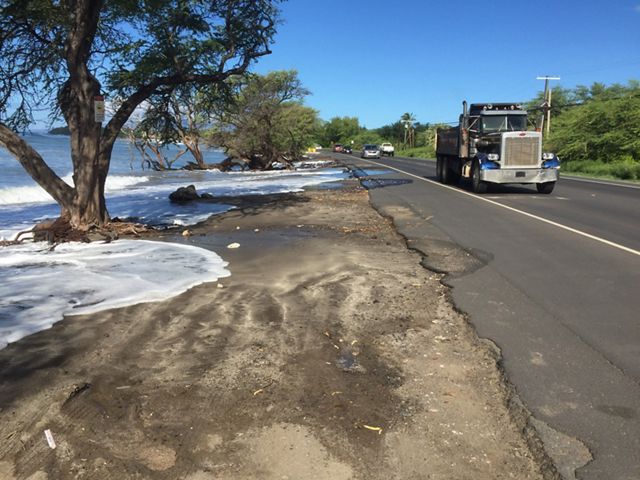Uniting to protect one of Maui’s largest fringing reefs.
In 2017, West Maui's Olowalu reef was declared a Mission Blue Hope Spot—a place that is critical to the health of our oceans. Spanning the coast from Olowalu to Pāpalaua, the 939-acre reef boasts a stunning diversity of coral, harbors the largest known manta ray population in the United States and is a primary source of coral larvae for the reefs of Lāna'i, Moloka'i and West Maui.

This expansive ecological treasure is also critical to the health of the community and economy, reducing wave energy and moderating erosion and flooding along the coast, where it protects homes, a coastal highway that connects West Maui with other parts of the island, and two beach parks. Tens of thousands of Maui residents and visitors travel the highway each day, with many stopping to visit the area’s beaches to enjoy reef-based activities such as snorkeling, diving, and surfing.
In Hawaiian culture, coral has long been revered. The sacred creation chant Kumulipo teaches us that the coral polyp was the first organism to emerge from the deep darkness, the most ancient ancestor, the foundation for all other life. It also teaches us that life in the sea and life on land are inextricably linked, that what we do on land impacts our ancient sea-dwelling ancestors. That link is clearly visible in Hawai‘i’s coastal waters and on the coral reefs they harbor. Olowalu is no exception.
Hope for a Hope Spot
The reef at Olowalu is regularly inundated with soil sediments carried to the ocean from nearby streams. These sediments smother live corals and prevent new corals from growing, making the reef more vulnerable to other stressors such as algal growth, disease, and marine heat waves. In fact, surveys following a statewide bleaching event in 2015 documented up to a 45% loss of live coral on the Olowalu reef.
Fortunately, landowners, land managers, and other groups with interests from mauka to makai (uplands to the sea) have joined forces to protect this irreplaceable natural wonder by reducing stressors and building reef resilience.
Water Detectives
A group of citizen scientists, known as Hui O Ka Wai Ola, collect coastal water quality data at Olowalu and more than 30 other sites along West Maui’s leeward coast. Their efforts measure a dozen components of water quality, including levels of sediments and nutrients, and fill information gaps, complementing data collected by the Hawai‘i Department of Health. Three organizations—TNC, the Maui Nui Marine Resource Council, and West Maui Ridge to Reef Initiative—partnered to launch the group and support its efforts through ongoing coordination and data analysis. To view findings from the sites they monitor, visit https://www.huiokawaiola.com/

Reducing Sediments from Upland Areas to Increase Reef Resilience
Minimizing sediments in coastal waters is a vital step toward building reef resilience. The Nature Conservancy (TNC) is working with the National Oceanic and Atmospheric Administration (NOAA), the Hawai‘i Divisions of Aquatic Resources (DAR) and Forestry and Wildlife (DOFAW), county, state, and private landowners, and the broader community to identify and implement actions to reduce harmful sediments on the reef. These efforts—informed by our ongoing scientific research in the watershed and in coastal waters—are focused on reducing sediment flows through effective watershed management, including improved fire and ungulate control and the installation and maintenance of sediment capture and retention systems in Pāpalaua and Manawaipueo gulches.

Promoting Nature-Based Solutions to Build Coastal and Reef Resilience
Coastal erosion driven by sea-level rise and storm surge is prevalent and increasing along the West Maui coast, where it accelerates the degradation of habitat and destruction of coastal infrastructure. Olowalu has been particularly hard hit, with the coastal Honoapiʻilani Highway experiencing chronic flooding. Though seawalls were installed to mitigate the flooding, this type of shoreline hardening can impede beach migration and other natural ecological processes and exacerbate erosion and beach loss.
To address the chronic flooding and erosion, the Hawai‘i Department of Transportation is preparing to move six miles of the highway. With the highway expected to move inland, Hawaiʻi has a unique opportunity to restore the area’s natural features, including beaches, dunes, and wetlands, to recover the protective benefits of a living shoreline and allow for natural ecological processes such as seasonal beach migration. Restoring this natural infrastructure is a cost-effective alternative to investments in grey infrastructure to protect against the impacts of sea level rise, flooding, fire and sedimentation and can help mitigate the environmental impacts of the highway relocation.

Together, We Find a Way
Collaborative planning helps to avoid missteps and leads to better outcomes. To inform solutions for building resilience along the Olowalu coast, TNC partnered with Kipuka Olowalu and the Coral Reef Alliance to engage the community, landowners, and resource managers in creating a shared understanding of the cultural, historical, and ecological resources of the area and the opportunities for building resilience.
Through a series of conversations, interviews and small gatherings, the group developed an overview of the area that includes a status report on the health of the watershed and identifies key cultural and environmental concerns and priorities. The collaborative endeavor encouraged candid discussion among participants and helped to build trust between those with deep historical connections to Olowalu’s lands and waters and those with the tools and capacity to improve management.
Continuing conversations will help to ensure that the community voice is reflected in the various coastal planning processes and help to find ways to build resilience for the Maui community and for the reef.
We Are Our Island’s Keepers
Learn more about the efforts at Olowalu and how you can help.

We Can’t Save Nature Without You
Sign up to receive monthly conservation news and updates from Hawai’i & Palmyra. Get a preview of Hawai’i & Palmyra’s Nature News email.

